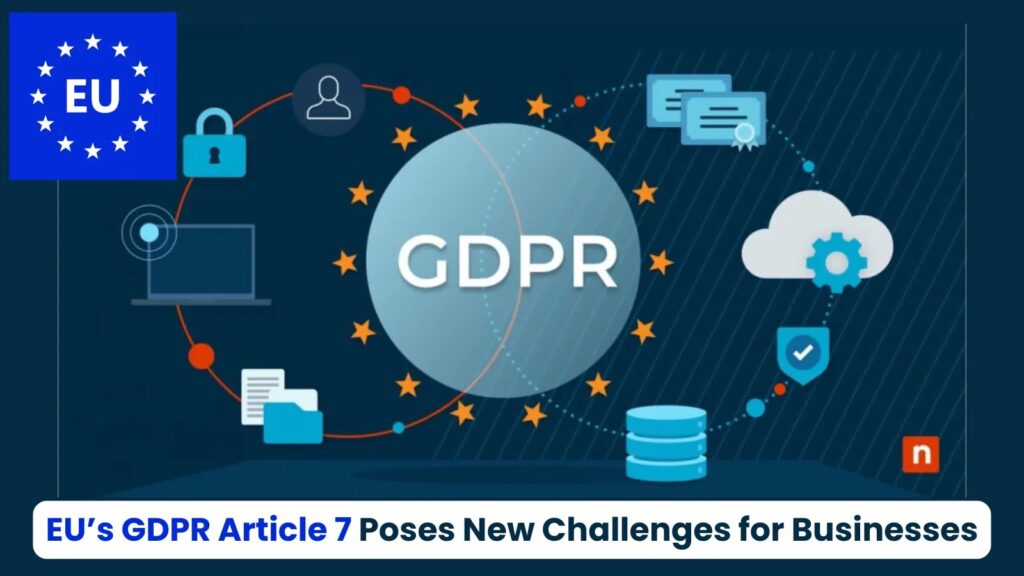As businesses around the world embrace digital transformation, the European Union’s General Data Protection Regulation (GDPR), enacted in 2018, remains the basis of data privacy and security.
The recent safety report highlighting rapid advances in artificial intelligence (AI) focuses on GDPR compliance, in particular Article 7, and provides consent requirements for processing personal data, including images and videos.
Compliance has proven to be a complex but important task as organizations are increasingly using AI to generate and process images.
.png
)
GDPR is increasingly important in image management
The GDPR classifies images or videos containing identifiable individuals, such as headshots of employees and event photos, as personal data.
Article 7 requires an organization to obtain express written consent before collecting, using or sharing such assets.
This requirement extends across corporate websites, social media and marketing materials, creating unique challenges for businesses expanding their digital operations.
“Images are no longer marketing tools, they are personal data under the GDPR,” says a regulatory savvy cybersecurity expert.
“Whether it’s an outspoken photo or an AI-generated image, companies need to ensure compliance to avoid heavy fines and reputational damage.” The rise of AI in creating and editing images adds even more complexity.
Organizations need to decide whether to use real visuals or AI-generated visuals, while maintaining strict consent management and security protocols to protect sensitive data.
Key Compliance Requirements under Article 7
In line with Article 7, businesses employ robust measures to manage consent and protect image data.
Consent Document: Companies must maintain a time-stamped consent record for each image, specifying the scope of usage and ensuring secure storage with strict access controls. Granular Control System: Security architectures must enable accurate access control and allow organizations to revoke their rights if consent is withdrawn. Regular backups and version control are essential to meeting digital rights management standards. Audit Trail: Comprehensive tracking of how images are used, modified or shared is important. These records demonstrate compliance and enable security teams to detect unauthorized access that could indicate a data breach.
Improve security through technical management
Beyond consent, businesses are implementing sophisticated technical measures to protect image data.
Data Classification and Tag: Automated System Tags Personal Data, Image Tags that streamline consent management and retention processes. Encryption and Access Control: Images are encrypted during transport and rest and implemented via secure protocols such as SSL/TLS. Version Control.
The secure document management platform is also attracting attention, allowing teams to work together safely while maintaining centralized security.
Focused operational security
To maintain GDPR compliance, organizations prioritize operational security.
Regular assessments: Vulnerability scans, penetration testing, and configuration reviews of image management systems are conducted to identify risks. Matched Response: Contains violations, notifies affected individuals, and implements documentation procedures if personal data is breached.
Balance of efficiency and compliance
The GDPR places strict requirements, but businesses are finding ways to integrate compliance into their digitalization strategies.
Consent management systems are consistent with existing security tools such as security information and event management (SIEM) and data loss prevention (DLP) solutions.
Staff training programs are also important, educating employees on the processing of personal data in images and reporting incidents.
“Compliance doesn’t have to hinder efficiency,” said a data protection officer. “By incorporating GDPR principles into digital workflows, businesses can enhance both security and scalability.”
Future view: Future prevention strategies
As AI and automation restructure image management, organizations need to go ahead of the evolving GDPR enforcement.
New technologies such as AI-powered compliance tools and advanced encryption provide opportunities to streamline processes.
However, regular reviews of the security control and consent framework are essential to adapt to changing regulations.
“GDPR compliance is an ongoing commitment,” says a cybersecurity expert. “Companies currently investing in adaptable strategies are better positioned to navigate future challenges.”
As Data Privacy is increasing scrutiny, Article 7 of the GDPR serves both as a challenge and opportunity for organizations to build trust while driving digital innovation.
Make this news interesting! Follow us on Google News, LinkedIn, and X to get instant updates!



